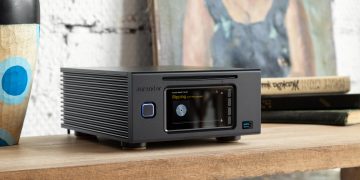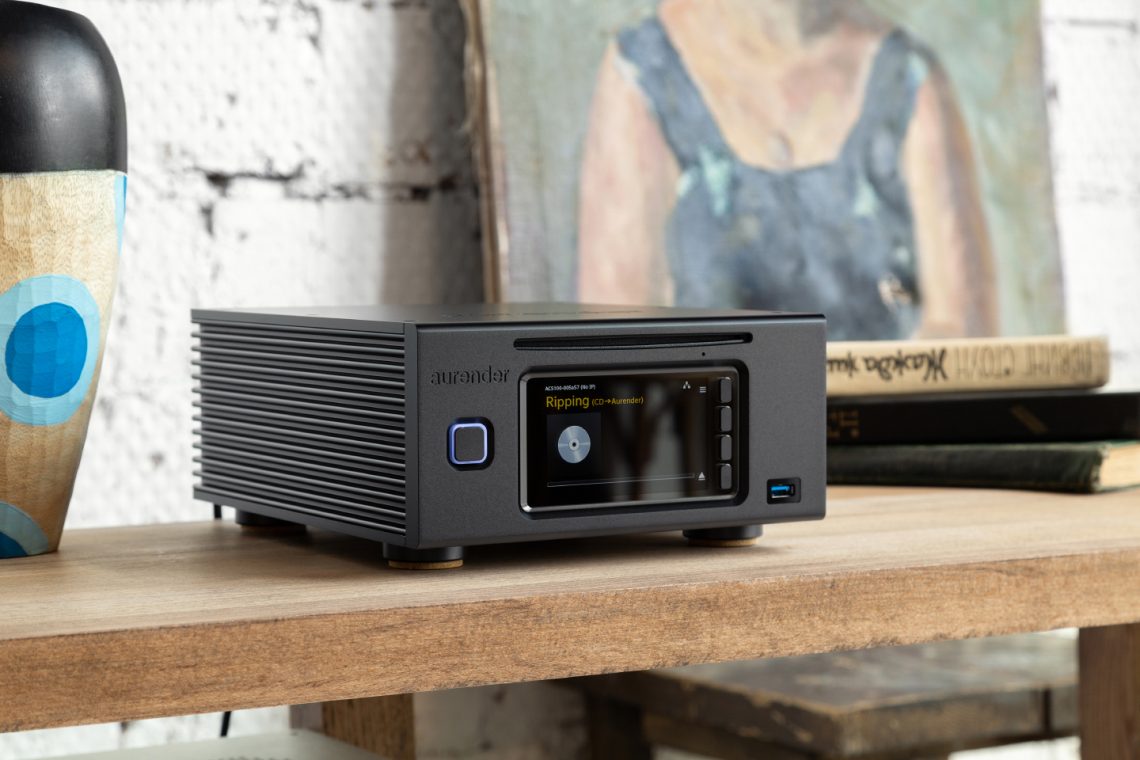A network player or "streamer" at the moment is the most practical and convenient way to listen the music. And even those who are focused on the quality of sound, have realized for a long time ago that streaming services in this sense at least as good as the CD, and the amount of online recordings can make any music lover happy. It may seem, what else can one dream about? Put a single signal source in the system, connect the Internet and enjoy!
But there are always especially thoughtful and boring personalities who will find in the proposed solution a serious flaw, literally impossible barrier! And not once the author of this article was surprised to find himself in this role. For example, when it turned out that the discography of his favorite band at the streaming services was published only in late remastered publications, the sound of which differs significantly from the cozy and warm sound of the first press. We also had to face the fact that the desired album or even the artist simply was not in the online catalogs.
You do not want to brush the web from the CD player in this situation - it completely destroys the minimalism and ease of use of the home system. And to copy existing CD editions with the help of a computer and pour them on a home server is a special and long forgotten procedure that requires special "hardware", software and solid time consumption. In this situation, only a device that combines all the necessary functions can be an optimal solution, and, fortunately, there are several suitable devices on the Hi-Fi market. For example, the Aurender ACS100.

Aurender is one of the few companies that was able to successfully combine apparently incompatible devices in one case: a file storage server and a high-end digital player. This technological miracle was achieved by separating the two functions over time. At the moment of music playback, the server part, as a potential source of interference, completely stops and is in sleep mode. This happens even if the music stored in the memory of the Aurender itself is played: all data is pre-recorded into a buffer placed on a low noise SSD. And when the music is not playing, the server part is available for any file manipulation like a regular home NAS. Several Aurender devices, including the ACS100, have CD ripping capabilities in addition to server and player functions. And this option works on the same principle - outside other processes. The manufacturer takes quality issues so seriously that it excludes the very possibility of using the device inappropriately. For example, the built-in slot drive TEAC is designed only to read data from disks into the device memory. It is not possible to listen to music directly from the disk, because in this playback scenario reading errors are possible, and the drive itself will be a source of all sorts of interference. In one word - the perfectionism in the action.

The ACS100 network player is the youngest of three Aurender models capable of reading CDs. And it's the only device with this capability released in a compact package with a half-width front of a standard component. Not only does this size look cute, but it is also very suitable for minimalist installations and can fit into an Ikea racking section if desired. It is noteworthy that despite its modest size, the server part is almost unaffected by it: on the back of the device there are two slots for 2.5-inch SATA drives. And if not to arrange a mirror RAID-array, then with two drives (HDD or SSD) you can organize a storage capacity of 8 Tb - enough space even for storing audio files.
The front panel has suffered from the reduced width only in the sense that the traditional four control buttons are not already the usual square, but a vertical line. In this case, the design has been changed for practical reasons: the fact that the LCD display, which occupies most of the front panel, is used, among other things, to indicate the function of the buttons, which may vary depending on what section of the menu you are in. In a short, it couldn't be any other way.
There are no claims to the materials of the case and the quality of construction - aesthetes have a real pleasure, perfectionists rejoice, engineers look with respect. Everything is smooth, symmetrical, neat, no gaps, no distortions, or any other signs of "Kraftiness" and small-scale production. In this matter, Aurender carries the trademark regardless of the value and class of the model.
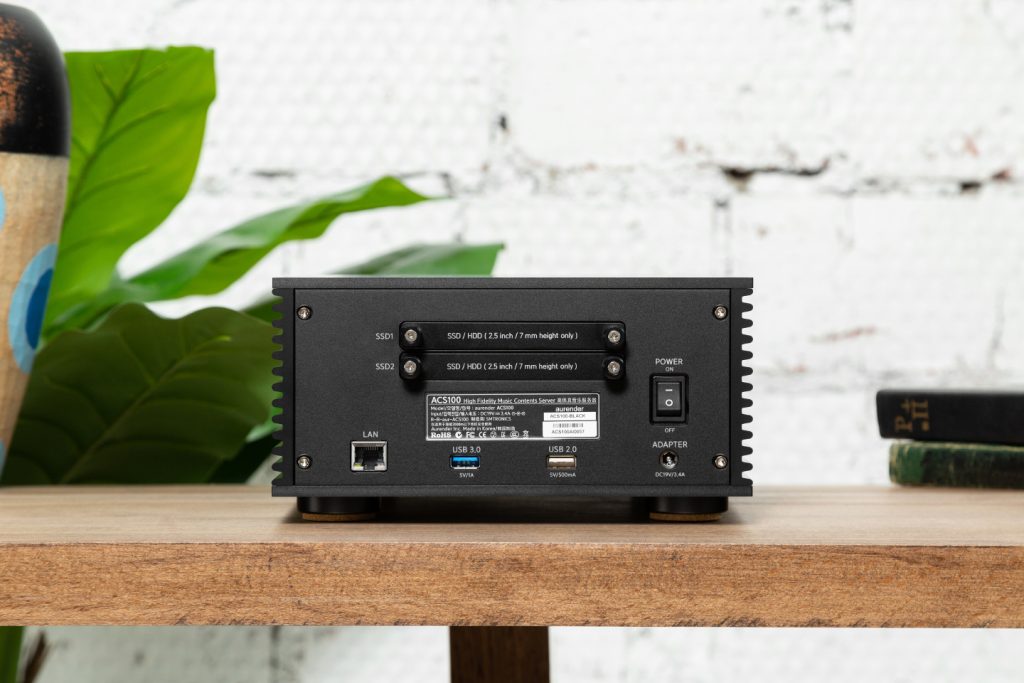
The process of "ripping" disks is another point from which you can get maximum pleasure. Perhaps some readers still remember the days when audiophiles and music-lovers were looking for Plextor or TEAC optical drives and set up their home computers to read CDs with high quality. The CD reading procedure was the most important step: the hardware had to be calibrated and the program had to be configured very carefully in order to read without errors. Filling in tags and other metadata is a separate long story, especially when there is no internet. In a word, to transfer a single CD to the computer memory it was necessary to perform a number of ritual dances with tambourines.
Owners of such a device as the Aurender ACS100, all these memories will be useful only as a scary stories that can be told to audiophiles-neofites. Simply because the whole procedure now comes down to inserting the disk into the slot (with the picture on top!). After loading a disk the device will automatically identify its contents, download all the names, covers and other necessary information from the Internet, read the disk and locate it in the appropriate folder of your music library.
The only thing you have to do manually is to set the initial settings. For example, specify in which format to save the contents: FLAC, AIFF or WAV, how to proceed upon detection of duplicates, whether to eject the disk after copying and so on. But once these settings have been made, the entire further process is 100% automated. After finishing work with disk user can perform any manipulations with received files: copy to external drives via USB or download them to any other device via network. If the information about the disk downloaded by the device from the Internet turns out to be incomplete or incorrect, you can edit it manually: tags, covers and other metadata can be easily changed using the proprietary ACS Manager application.
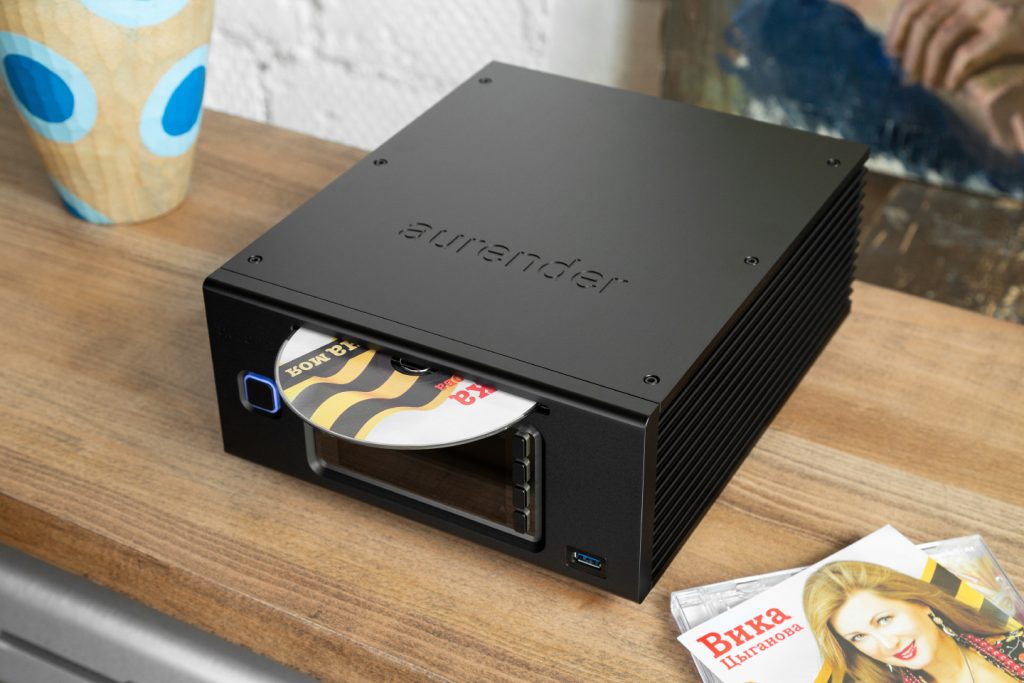
Keep in mind that the Aurender ACS100 has USB 3.0 ports on both the front and back, and the ability to copy files from external drives alone is not limited. If your CD collection consists of hundreds or even thousands of disks, this problem is solved by using an external CD drive with an auto-loader. These are made by Acronova. The device called Nimbie Autoloader can be charged with a pack of up to 100 CDs that will be automatically read one after the other.
Controlling is a question that Aurender developers have been dealing with for a long time and thoroughly. As a result, it is proposed to use the iPad as the main tool for work, because it is for this device was created the most complete and functional version of Aurender Conductor application. For Android devices, the application also exists, but has less functionality, so the choice of the method of control in some way is not alternative.

The interface of the Aurender Conductor app for iPad at the first moment gives the feeling of a spaceship's cabin - a huge amount of information around and it is completely unclear what to do with it. However, the algorithms are quick to learn, and the information that just seemed redundant becomes familiar and useful. Thanks to the most efficient use of the screen area, developers have managed to minimize the number of additional windows and tabs. Thus - everything you need is in front of your eyes, and access to additional information is carried out in one or maximum two (rather than three or four) movements. TIDAL and Qobuz services are integrated into the application, so there is no need to install them separately, and when compiling playlists, the entire media library of streaming services can be used along with files stored on an internal drive or other home servers. The search tool has many criteria, and it can also be applied to any of the available media libraries. In this way, the user gets some kind of single record library and the same problems with the lack of the right releases, which started the story, are completely in the past.
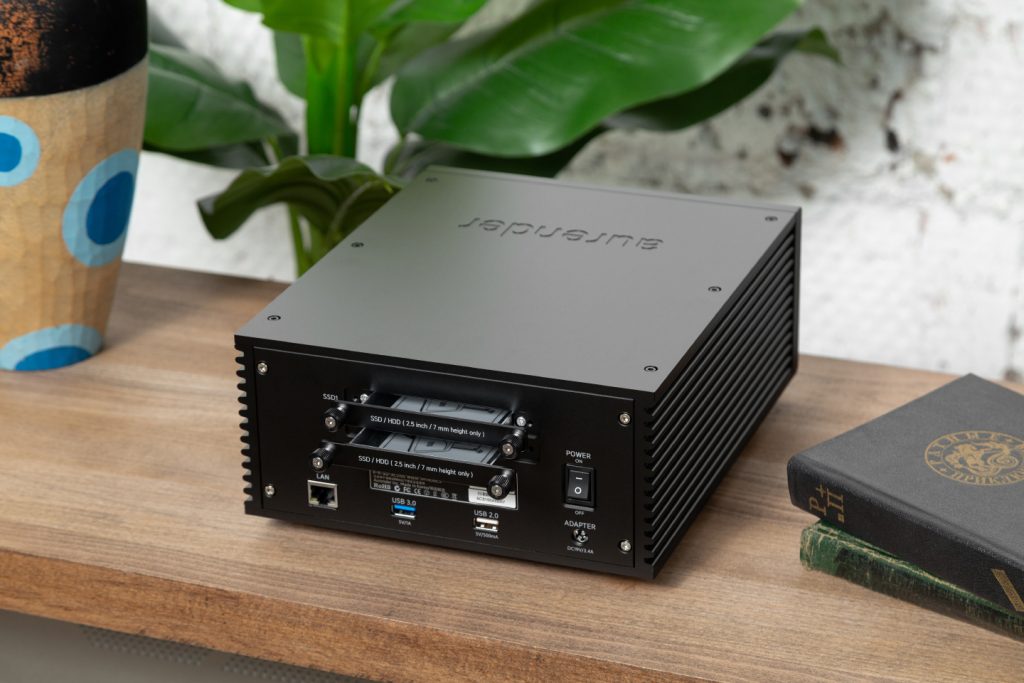
The only way to integrate the Aurender ACS100 into your audio system is through the USB Audio Class 2.0 interface. For this purpose, a separate USB 2.0 port, implemented on a standard USB-B connector of professional quality from the famous manufacturer Amphenol, is placed on the rear panel. Exactly this interface is optimized for work with audio, and for all other functions it is proposed to use USB 3.0 ports. The main thing here is not to be confused! USB 2.0 interface provides maximum quality of PCM audio streaming up to 32 bits/768 kHz and supports native DSD up to 512. By modern standards, these features are sufficient with reserve.
The absence of analog outputs and even the trivial SPDIF is not an obstacle to build a system in the spirit of minimalism. If you like small forms in Hi-Fi, I recommend to pay attention to the Mytek Brooklyn components. With their help you can build a very compact system that produces great sound both in headphones and with acoustics. If the main point is not the size, but the number of components, it can also be implemented: many integrated amplifiers and even some active speakers nowadays have USB-B input, and this feature is far from being basic.

To the amplifier and speaker in this system originally there were no questions in terms of their readiness to produce the highest quality sound, and some technical points on the Aurender ACS100 still need to be clarified. After all, a standard home NAS also can output music to an external USB DAC, but the quality of such digital transport can hardly be called audiophile.
In addition to choice of the optimal USB interface mode, disabling server playback functions and its own lossless HiRes software, the Aurender ACS100 is equipped with additional filters to eliminate noise and interference from the power supply and Ethernet port. The power circuit uses supercapacitors, which eliminate voltage ripples during operation, and in the event of a power failure, act as an uninterruptible power supply so the device can stop the drives and shut down in normal mode without data loss. Thus, even in the event of a sudden power surge during operation, the power supply will provide the most stable power to all circuits. The principle of multiple performance reserves, which have a positive impact on the sound, applies to the main hardware of the Aurender ACS100: quad-core processor Intel N4200 and 8 GB of RAM can eliminate the slightest time delay in the playback of audio files and streaming. Moreover, the speed of response of the system in the process of navigation and work with files, a powerful "hardware" has an extremely positive effect.

The degree of impact of digital transport on sound is great and subtle simultaneously. When it works correctly, other components are responsible for the nature and quality of sound: DAC, amplifier and acoustics. Even the contribution to the sound of cables is much easier to identify than to understand what digital transport has to offer. However, if the hardware of the transport has a high level of time delay, produces unnecessary conversions of the digital stream and does not do it clean enough, or it is simply exposed to interference that leads to higher levels of jitter, then we hear it perfectly well, and the change of digital transport to a better quality is perceived as a radical change and upgrade of the whole system. This is exactly what you can experience if you first use an ordinary computer or laptop as the transport and then listen to the same files with the Aurender ACS100. There is a noticeable increase in resolution, the sound picture gets a sizeable dimension, live sounds become more natural and realistic. Markus Miller's bass guitar suddenly begins to sound elastic, clear and dynamic, Anna Netrebko's vocals are clearly focused on the stage and begin to sound more penetrating, and the analog synthesizers of early Kraftwerk impress with the combination of the mechanistic sound and the warmth of the timbres. Making another equally noticeable step up the quality line by moving on to another digital transport will not be easy. Devices of twice the cost, capable of boasting an even more reverent attitude to the organization of power and minimize internal jitter give a noticeable, but not so impressive increase in quality. The scene becomes a little clearer, the timbres a little more natural, there is more "air", but the bright WOW-effect that makes the system upgrade to the Aurender ACS100, you probably will not experience anymore.
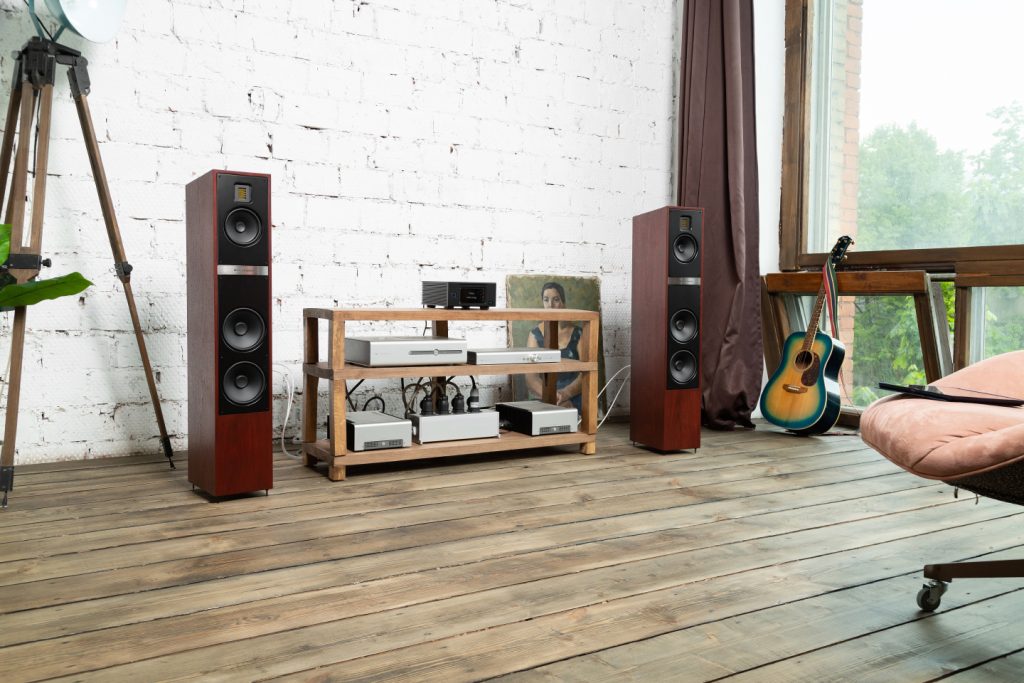
To sum up, it makes sense to define the application scope and future use of the Aurender ACS100. It is obvious that it is a very convenient tool for converting digital CD-photo libraries to file storage, giving your favorite music eternal life.
At the same time, the ACS100 itself can become a source of music files for all home audio components. With other Aurender devices, it integrates seamlessly into a single ecosystem, and third-party network players and multiroom speakers will recognize the ACS100 as a regular media server.
The role of Aurender ACS100 digital transport performs similarly successful. Not only does it deliver pure digital audio streaming with lossless playback of the highest resolution files, but it also offers convenient tools for music playback and media library management. Thus, as a server for all home audio components, the Aurender ACS100 itself may well claim a place in the main system. With one small but very important consideration: the division of functions over time is the main principle of its operation.
Review author: Maxim Naumov
Information: aurender.su
